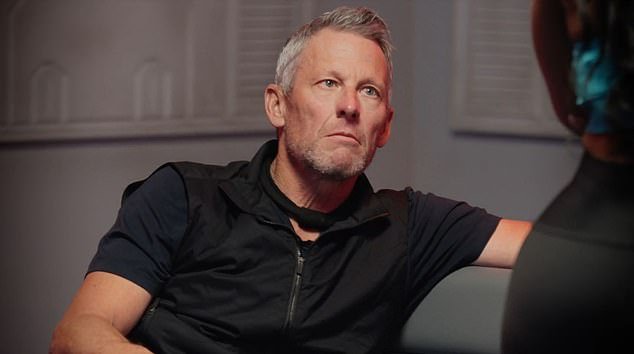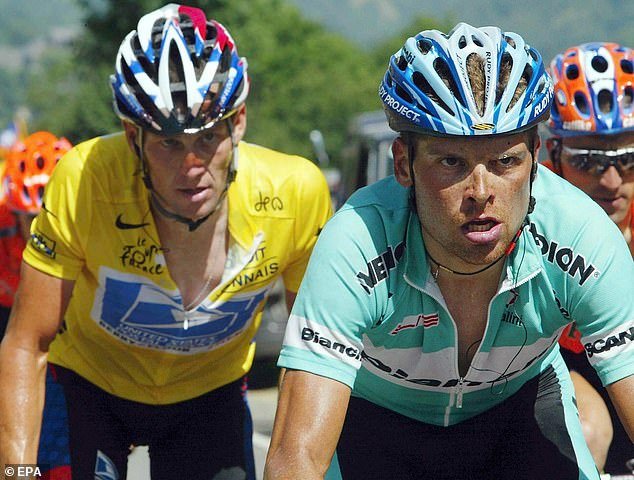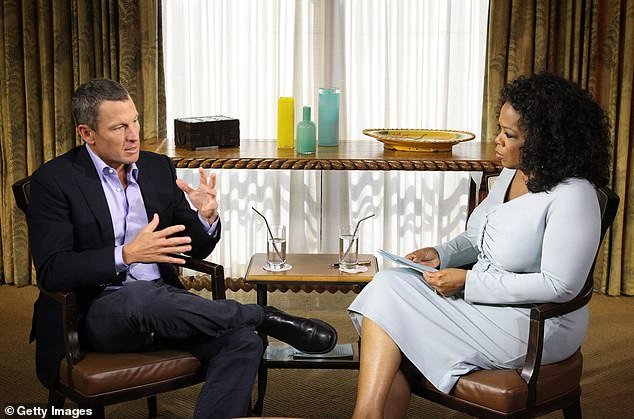Lance Armstrong explains how he escaped detection as a drug cheat despite being tested 500 TIMES before his spectacular fall from grace
- Lance Armstrong won a record seven Tour de France titles between 1999 and 2005
- The American admitted doping charges in 2013 after a second retirement
- He explained that he had passed more than '500' tests during his cycling career
Lance Armstrong has told how he managed to escape detection as a drugs chief after years of using 'undetectable' substances.
Armstrong was previously considered perhaps the greatest cyclist ever in the history of the sport. He dominated the Tour de France from 199-2005, winning an unprecedented seven titles in a row.
Despite constant suggestions of foul play, however, he passed drug test after drug test, seemingly proving his innocence in a sport that has largely had a checkered history with doping.
After retiring from the sport twice, in both 2005 and 2011, he was found to have used performance enhancers throughout his career in 2012 following a USADA investigation based on historical blood samples.
USADA said Armstrong had led “the most sophisticated, professional and successful doping program sports has ever seen” within his US Postal Service and Discovery Channel teams.
Lance Armstrong won seven consecutive Tour de France titles between 1999 and 2005 before they were stripped from him

The American explained how he has avoided detection as a drug fraudster throughout his career
Although he initially protested his innocence, he did not contest the charges, but in January 2013 he would finally admit to his involvement in doping, although his stripped titles would not be redistributed.
Now Armstrong has explained how he managed to avoid detection throughout his career in the saddle, claiming he was subjected to more than '500' tests.
'In a sense you would be frustrating the system, but what I always said – and I'm not trying to justify what I said as something that I would like to repeat again – but one of the sentences was: 'I've been tested 500 times and I have never failed a doping test,” the American said in the Club Random podcast with Bill Maher.
'That's not a lie. It's the truth. There was no way to avoid control. When I peed in the cup and they analyzed the pee in the cup, it happened.”
He added: 'The reality and truth of all this is that some of these substances, especially the most beneficial ones, have a half-life of four hours. So certain substances, whether it's cannabis or anabolics or whatever, have a much longer half-life.
“You could smoke that joint and ride your tractor to work… in two weeks and test positive because the half-life is much longer.”
Armstrong was charged with and admitted to blood doping, which uses illegal products and methods to increase the body's ability to transport oxygen to the muscles.
In an endurance sport such as cycling – where the Tour de France lasts three weeks with only two or three rest days in between – the use of Erythropoietin (EPO) provides riders with a major advantage.

Armstrong's 2003 rival, Jan Ullrich (right), also admitted to blood doping in 2013

Armstrong admitted to doping in 2013 after being sanctioned for doping last year
Instead of enduring the rigors of the tour like a clean athlete, those who use EPO may find that their muscle production declines more slowly and much less severely, which also aids recovery between phases.
“With EPO, the rocket fuel that changed not just our sport but all endurance sports, you have a half-life of four hours, so it leaves the body very quickly,” Armstrong continued.
'I don't want to encourage anyone to do something they don't have to do. The truth is you had a drug that was undetectable, which was hugely beneficial to performance and recovery.
“Both are important, but especially for performance… And, as we were led to believe, which I disagree with, it was safe when taken under the care of a doctor.”
